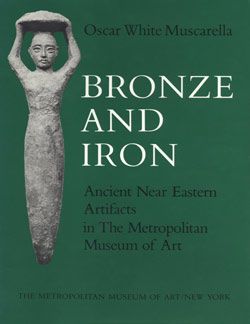Arrowhead
Not on view
This is a bronze socketed trilobate (i.e., ‘three-bladed’) arrowhead. It was excavated at Yarim Tepe in northeastern Iran, six miles south of the modern town of Gonbad-e Kavus. Yarim Tepe was a small settlement, inhabited from the Neolithic to the Parthian period, with many interruptions. Trilobate arrowheads were once associated with the Scythians and Cimmerians, nomadic peoples from the Eurasian steppe who invaded the Near East in the 8th century B.C. However, this type of arrowhead appears far and wide in space and time, indicating it was widely used in the ancient Near East, doubtless on account of its efficacy at piercing armor. Since it was found in the earliest level at Yarim Tepe along with Parthian pottery, this arrowhead is most likely of Parthian date. The Parthians were famed in antiquity as archers, and gave their name to the ‘Parthian shot,’ a tactic in which a mounted archer rides away from his enemy while firing arrows at him.
Due to rights restrictions, this image cannot be enlarged, viewed at full screen, or downloaded.


